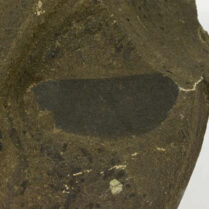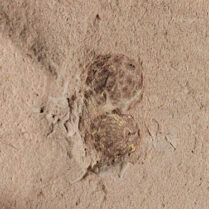Description
Cretaceous Ginkgo sp.
Late Cretaceous
Hell Creek Formation
Fallon County, MT USA.
61mm Ginkgo leaf on 100mm matrix.
Plant.
Ginkgo is both the genus and the common name (aka the maidenhair tree) for a tree that dates back to the Early Jurassic of Asia. It declined in diversity across the Cretaceous but survived into the Paleocene in North America and Europe. Its paleogeographic range became increasing restricted as climates trended cooler and drier across the Cenozoic.
Ginkgo died out in North America in the Late Miocene. It was still common in Europe during the Pliocene but died out there too by the Pleistocene – an apparent victim of sharply cooling climates, the beginning of the ice ages.
Ginkgo was discovered alive in China about 900 years ago. It has been successfully reintroduced in Europe and North America as an ornamental tree with a knack for being fungus and insect-resistant. It has very distinctive, fan-like leaves that compare well with fossil specimens from the Paleocene.





